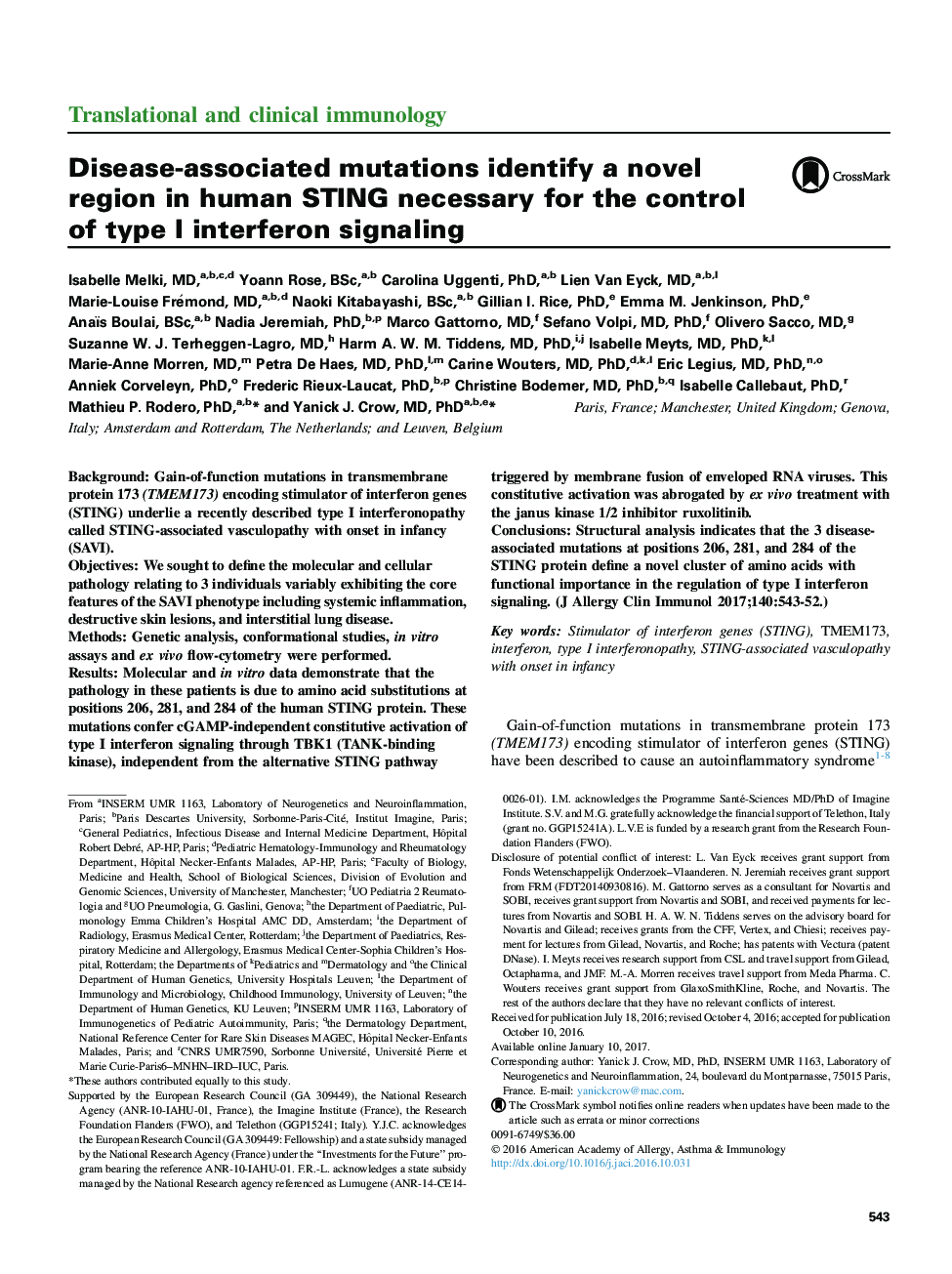| Article ID | Journal | Published Year | Pages | File Type |
|---|---|---|---|---|
| 5646355 | Journal of Allergy and Clinical Immunology | 2017 | 15 Pages |
BackgroundGain-of-function mutations in transmembrane protein 173 (TMEM173) encoding stimulator of interferon genes (STING) underlie a recently described type I interferonopathy called STING-associated vasculopathy with onset in infancy (SAVI).ObjectivesWe sought to define the molecular and cellular pathology relating to 3 individuals variably exhibiting the core features of the SAVI phenotype including systemic inflammation, destructive skin lesions, and interstitial lung disease.MethodsGenetic analysis, conformational studies, in vitro assays and ex vivo flow-cytometry were performed.ResultsMolecular and in vitro data demonstrate that the pathology in these patients is due to amino acid substitutions at positions 206, 281, and 284 of the human STING protein. These mutations confer cGAMP-independent constitutive activation of type I interferon signaling through TBK1 (TANK-binding kinase), independent from the alternative STING pathway triggered by membrane fusion of enveloped RNA viruses. This constitutive activation was abrogated by ex vivo treatment with the janus kinase 1/2 inhibitor ruxolitinib.ConclusionsStructural analysis indicates that the 3 disease-associated mutations at positions 206, 281, and 284 of the STING protein define a novel cluster of amino acids with functional importance in the regulation of type I interferon signaling.
